Jewellery
Jewellery is an independent medium at the intersection of applied and fine arts. It has very specific visual and conceptual possibilities. In the Jewellery Department, research and experiment are conducted into the potential and the scope of jewellery as a medium and into exploring jewellery as an attitude.
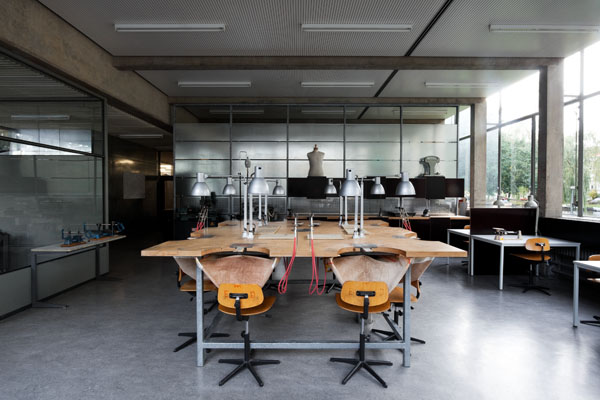
Contact
edelsmeden[at]rietveldacademie.nl
Site
www.jewelrydepartment.nl
By exploring the attitude that lies at the heart of jewellery, the Rietveld Academie takes a strong position in saying that a jewellery attitude does not necessarily have to lead to jewellery design.
Grasping and defining the jewellery attitude not only helps to position contemporary jewellery in relation to contemporary art and culture (arts, fashion, and design) but also — and probably more importantly — it allows for a more precise formulation and extrapolation of what future jewellers are good at and what their praxis could look like. It strengthens their identity and gives space for new activities both within and outside of the jewellery context.
Students are challenged to approach a wide range of issues and projects in a jewellery-related manner. This manner is obviously not predefined. It is up to the student to give character and meaning to this. During their studies, students learns to position themselves and their work within a given or self-generated field or context. This allows them to work within any given field or context, applying their own and authentic methods, signature and knowledge.
The multidisciplinary team of instructors supervises the students and organises the curriculum. The curriculum has its roots in fundamental jewellery issues such as adorning and expression, identity, and identification, the human body, the relationship of maker-jewellery-wearer, the sign, signal, and message, mass production versus the unique art piece, craft and technology, classic techniques, new materials and natural resources, the history of trade and the emergence of monetary systems, and jewellery as art in the public sphere versus the intimate.
The focus on these topics in combination with the specific and highly personal way of making, translating and thinking is what distinguishes the jeweller. As an outcome of this experimental and research-based approach the course is not limited to particular materials and the student’s research may be expressed by means of various media in 2D or 3D. In addition, students may use performance, photography, sculpture, video and other forms of expression.
The aim is for the student to learn to reflect on his work and be able to connect the work to the outside world. To be able to present, clarify and defend the work is vital. During the first year and for part of the second specialist year, the student works primarily within the framework of assignments and thematic projects in order to gain substantive, formal and technical experience. The student will learn to work with various materials and techniques, as well as gaining basic knowledge about the traditional field of work. During the graduation year, the student realises a concept of his or her own choice, which is then exhibited in public in order to evaluate its visual, philosophical and technical merits. The students who join the department are expected to display an independent, open and mature attitude towards their studies.
Courses offered
Subject-related and technical supervision, visual research, 3D design, progress discussions (individually and in groups), art theory, research strategies, reading and writing class, workshops, guest lessons and lectures, field trips, draughtsmanship, preparation for professional practice, group projects, presentations and exhibition practice.
Study structure
First specialisation year
During the first specialisation year, you will work on the basis of assignments and thematic projects helping you to gain substantive, formal and technical experience. Alongside this you develop free work which you initiate yourself. You will be guided in this process.
Second specialisation year
During the second year you will deepen your work and research and you will work towards an authentic visual language. You will initiate projects and gain skills for thorough theoretical research. You will be guided in setting up a sustainable artistic working methodology.
Third specialisation year
In the third specialisation year, you will work towards the final examination. In addition to the visual work, the final examination will include a thesis. The examination will be concluded with a large exhibition by all of the Rietveld Academie’s departments, held at the end of July, which will be open to the public.

True Doors project makes elderly people happier
Read more
Demented elderly residents of nursing homes become happier and feel more at home when an image of a familiar front door is placed on their new door. This is the result of a study by Trimbos Insituut. These doors, called True Doors, are being used to give residents something pleasant from the past. The article and short video (in Dutch) from NOS.nl can be found here.
True Doors is originally a project by alumna Marieke van Diepen (Jewellery, 2007).
Photo credit: True Doors
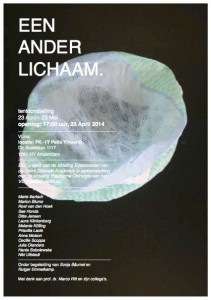
Another Body
Read more
13 students from the jewelry department have been approaching issues such as beauty, health and perfection, considering the malleable, normal and deviations from the norm, reflecting upon the relationship between appearance and identity and asking questions about our desires and the price we are willing to pay for them.
This exhibition is not only the result of three months of study, it is even more an invitation for a deepening dialogue between art, design and the medical world.
April 23 - May 23
Opening: April 23, 5PM
Location: PK-1Y Patio Y(noord) De Boelelaan 1117 1081 HV Amsterdam
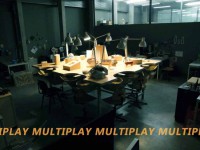
JEWELLERY DEPARTMENT AT OBJECT ROTTERDAM
Read more
JEWELLERY DEPARTMENT GERRIT RIETVELD ACADEMIE
Netherlands Architecture Institute (The New Institute), Museumpark 25, Rotterdam,The Netherlands
Thursday 7 February 10.00-18.00 h
Friday 8 Februari 10:00-21:00 h
Saturday 9 and Sunday 10 February 11:00-18:00 h
Admission 5 euro (10 euro incl. visit NAi)www.objectrotterdam.com
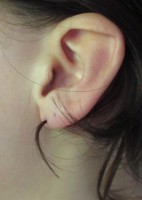
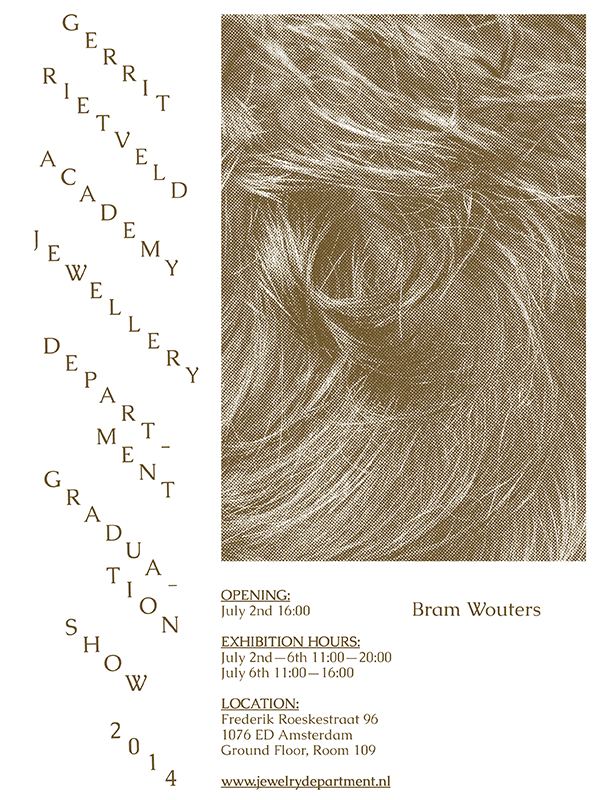
2014-06-27 14:23:13
Jewelry Department Graduation Show 2014
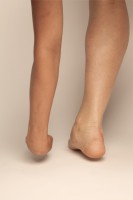

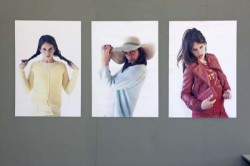

Father's Vault, Vilnius, Lithuania

Projects
While studying in the Jewellery department, you will regularly have the opportunity to display your work to the public, for example at a presentation, an exhibition, a school presentation, an open day or a symposium.

Theory
Visiting lectures of the Studium Generale is compulsory in the first specialisation year of the Jewellery programme. It is elective in the second and third year. The Studium Generale provides a general theoretical context concerning current themes in the contemporary international art world. The Studium Generale brings in prominent speakers from the Netherlands and abroad to give lectures. For more information, see Studium Generale
Work placement and exchange
A work placement at the end of the second specialisation year or the beginning of the third year is a compulsory part of the programme. Students may take part in exchange programmes during the second specialisation year, but this is not compulsory.
Students 1st year